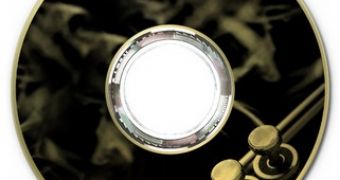Most computer users that are the proud possessors of an older optical burning drive have just about three options in order to label their freshly backed CDs or DVDs. First of all, there is the option of using a soft tipped marker pen and hand writing your very own label, but this option leaves the optical discs in a not too pleasant state and the labels themselves are just a symbolic name or a ordering number.
The second variant would be to use a separate label printing machine that can cover an optical disk with a colored sheet of paper on which the desired label is then printed. While this method results usually in a higher quality label that can be customized according to the users' wishes, the label printing machine is quite expensive. Third option is to upgrade to one of the optical burners that are using the newly implemented LightScribe technology. In order to use it, both the optical medium, the CD or the DVD and the drive must be LightScribe compatible as the discs that are compatible are coated with a special substance that allows the burned to produce laser-etched labels.
The surface of a LightScribe optical disc is covered with a reactive dye that changes color when it is placed under the laser light with the 780nm wavelength so it will not fade or suffer any color alterations in normal light for a couple of years. Even so, it is recommended to keep LightScribe optical enabled discs in a protective dark casing. On the surface of the disc, the laser burns images and text in concentric circles starting from the inner part of the drive, so the outer parts will take longer to be burned. In its first phase, the LightScribe technology permitted only a grey etch on a golden background, but under the newer 1.2 specifications background color can vary and while it is not possible to erase and rewrite the label of a LightScribe disc, it is possible to add more elements to it later.
Every LightScribe enabled optical disc has a code engraved from the factory that allows the burner drive to know precisely the position of the laser beam when reported to the surface of the disc. Because the same disc can be relabeled with the same content over and over again in order to make the contrast higher, it is important to know where exactly the laser beam is. Normally, each successive image will be of better quality than the previous one and, by modifying certain parameters from the software application, higher contrast images will result.

 14 DAY TRIAL //
14 DAY TRIAL //